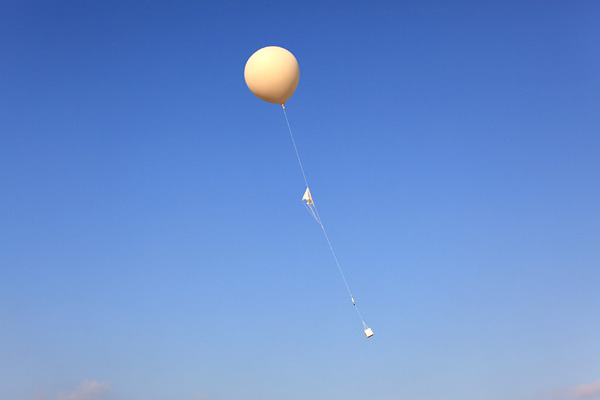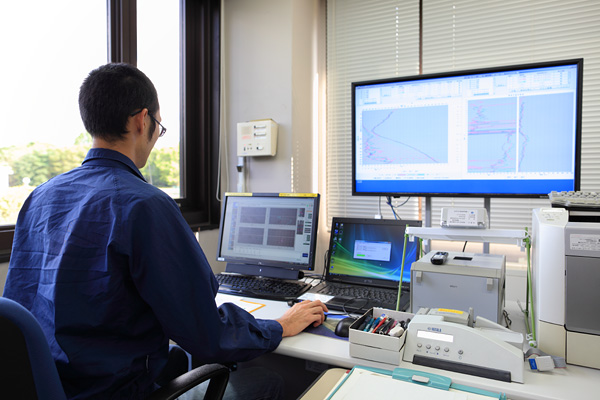Aerological Observation Using Balloons
Overview of aerological observation using balloons
Aerological observation is essential in improving the accuracy of weather forecasts, and climate change monitoring requires continuous upper-atmosphere observation with high accuracy. To these ends, radiosondes are used.
A balloon-borne radiosonde is a meteorological instrument that can be suspended from a hydrogen-filled balloon to continuously observe weather variables such as temperature, humidity and wind up to altitudes of around 30 km. The various types of radiosonde available enable observation of different variables.

Aerological observation using a radiosonde/parachute combination suspended from a balloon
Radiosonde types
The Aerological Observatory currently uses the following radiosonde types:
- iMS-100 GPS sonde
- RS41-SG GPS sonde
- RS41-SGP GPS sonde
- ECC ozonesonde
Other types such as rawinsondes and radioactivity sondes have also been used.
Characteristics of radiosonde observation
Radiosonde observation begins as soon as the balloon is released, and data collected by the unit are radioed to a receiver on the ground in real time. The balloon rises at a constant rate, gradually expanding as it goes higher. Observation ends when this expansion causes it to burst, and the radiosonde descends gently on the parachute. Observation data are quality-controlled before being made available worldwide for use in applications such as climate monitoring and weather forecasting.
Radiosonde observation is characterized by 1) highly accurate data thanks to direct atmospheric observation, and 2) precision of vertical-distribution data thanks to continuous monitoring in the vertical direction.

Radiosonde data processing